From internal pipelines, drains are transported by external ...

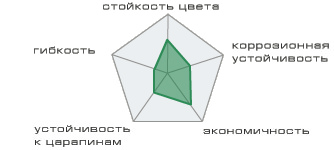
The durability and appearance of the roof made of metal depends primarily on what kind of coating it is covered. Types of metal tile coatings They are different, and they differ not only in strength and durability, but also in color fastness.
The basis of this coating is polyester. The material has long been used in the manufacture of metal tiles, has a glossy appearance and is distinguished by its ductility and high color stability.
Metal coating made of polyester, shiny, smooth, relatively inexpensive. It is highly resistant to corrosion and ultraviolet rays, that is, it will not fade under the sun for a long time. However, in thin layers (up to 30 μm), it is damaged by light mechanical influences, for example, when snow layers fall off the roof. Do not use polyester where weather conditions are unfavorable.
Among types of metal tile coatings matte polyester looks most attractive. This is polyester in which Teflon is added to create a matte finish. In addition to resistance to UV rays, it also has increased resistance to mechanical damage due to the increased coating thickness (35 μm). Even in difficult weather conditions, it will last a long time.

Pural Coated Metal based on polyurethane, the molecules of which are modified by polyamide. The coating thickness is 50 μm, which gives it additional mechanical stability. Ultraviolet and even chemically aggressive substances, such as acids that precipitate in areas with polluted air, do not change the properties. pural coated metal tiles. It serves for a long time without changing color and mechanical resistance in any conditions.
The surface of such a metal tile is silky to the touch and matte in appearance. Due to the properties of the pural roof with such a coating is easy to handle and install. The temperatures at which it retains its properties are from minus 150 to plus 1200 degrees Celsius.
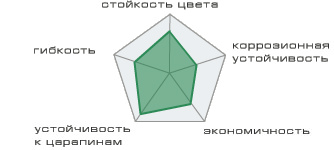
Plastisol 200 - metal coating from a polymer 200 microns thick. It is distinguished by volume embossing that imitates the skin or bark of a tree. It was developed specifically for difficult climatic conditions, including industrial zones with a high level of environmental pollution.
Plastisol 100 is half its thickness and is mainly used indoors. It is also made with a coating on both sides and is used for the manufacture of weirs.
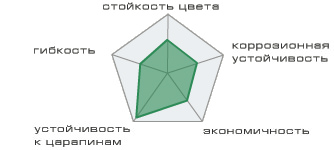
Of all kinds metal tile coatings it is the most suitable for decorating facades. It consists of a mixture of polyvinyl fluoride and acrylic in a ratio of 4: 1. It contains high-quality pigments to give shine and color, resistant to prolonged exposure to ultraviolet radiation.
The polymer is quite solid, has hydrophobic properties, which allows it to “repel” dirt, while being quite plastic. It can be matte or glossy. Metal coating can be shiny like metal. To do this, it is varnished on top with the addition of a special dye. Resistant to atmospheric and corrosion.
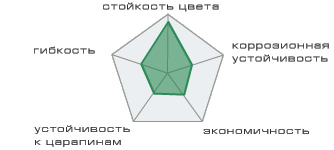
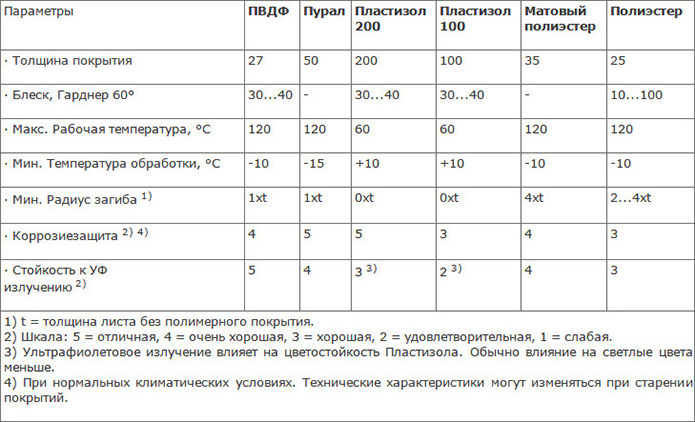
Coated metal tiles - pural, polyester, plastisol, etc. Features and manufacturers, current prices for polymer coatings of metal tiles.
By production of a professional flooring and a metal tile it is used steel sheet with a protective polymer coating. Coatings vary in thickness and characteristics and significantly affect the price of the finished material.
Sheet structure:
Properly applied coating will protect the metal sheet from rust for decades. At the same time, the bright color of the roof will remain.
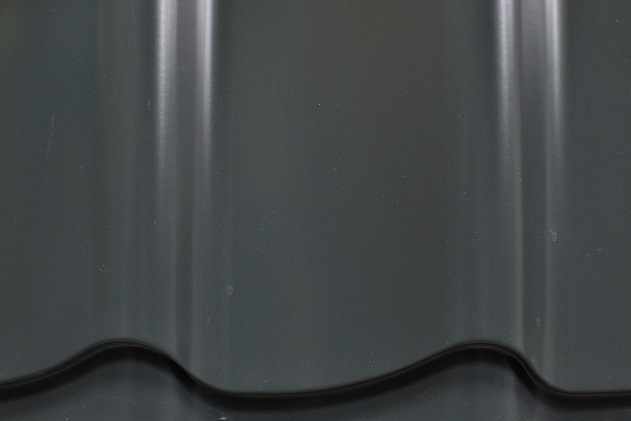
Polyester is the most inexpensive version of metal tiles with a polymer coating. Such a protective coating is made on the basis of polyester.
The main advantage of the polyester metal tile is that it withstands adverse climatic effects - temperature extremes, rain, hail, heating to +90 and frosts to -60 ° C. Suitable for all climatic zones. Color fastness is good.
The thickness of the polyester layer is 25 - 27 microns. Therefore, it is not as resistant to mechanical damage as plastisol. He needs careful handling during installation and delivery. Finnish metal tiles, both Swedish and Russian, are produced with polyester coating.
Matte Polyester
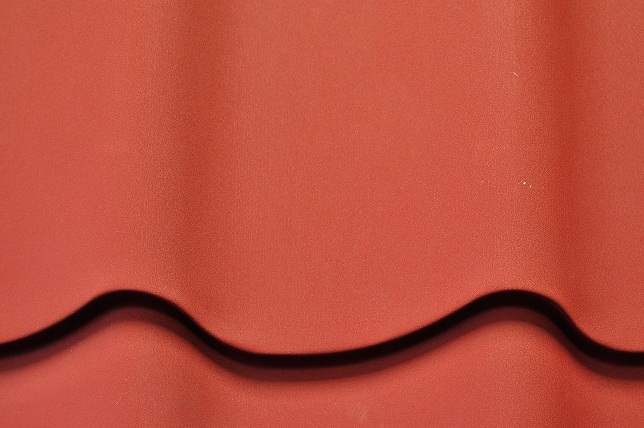
Matte polyester - a coating based on polyester enamel with the addition of metal particles. The thickness of the layer of matte polyester on the metal tile is 35 microns. This coating has all the advantages of ordinary polyester, but the matte metal tile looks more noble on the roof and does not shine in the sun.
In addition, the resistance to mechanical damage in matte polyester is slightly higher than in ordinary polyester due to the greater thickness (35 μm instead of 25-27 μm) and a more durable surface layer.
With matt polyester coating, we offer metal tiles from Sweden Measure Systems.
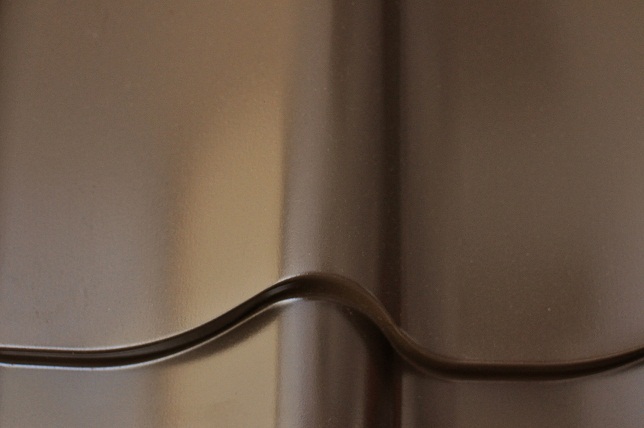
Prelaq Nova is a modern protective coating. Produced by a major Swedish concern SSAB. Thickness is 50 microns.
The properties are similar to a metal tile coated with polyurethane - it also tolerates the effects of climate and not quite accurate handling during installation. But Nova coating does not contain polyurethane.
Top Coat 50, P50 and HBP (High Build Poliester) are the old coatings for Prelaq Nova.
Metal tile Prisma (Prism)
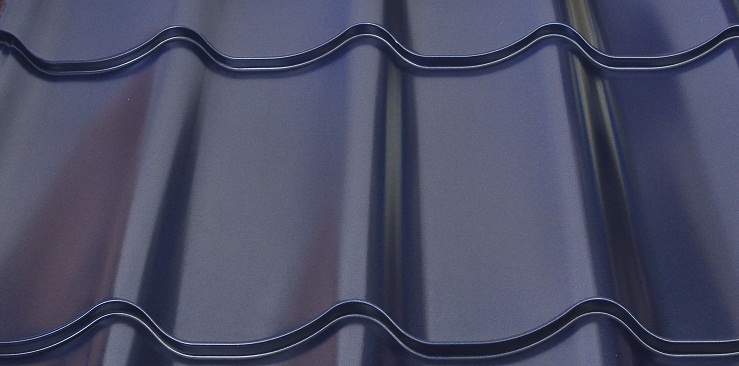
Colorcoat Prizma ® protective and decorative coating was created by the Angus-Dutch metallurgical concern Corus. Coating thickness 50 microns. Corrosion resistance is 2 times higher than that of polyester.
Metal Prism - one of the most interesting roof options. Several original colors with metallic effect make it unique.
Pural ™
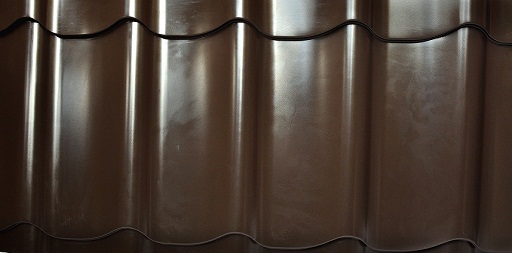
Pural ® * is a polymer coating based on polyurethane modified with polyamide. The coating is designed and manufactured by Rautaruukki.
The Pural ® metal tile has a silky matte surface with a slight sheen.
Its resistance to "weather shocks" is better than that of polyester metal tiles. The coating withstands heating up to + 100 ° and cooling to -60 ° C. Resistance to mechanical damage is higher due to the greater thickness compared to polyester - 50 microns.
Matt Pural (Pural Matt ™)
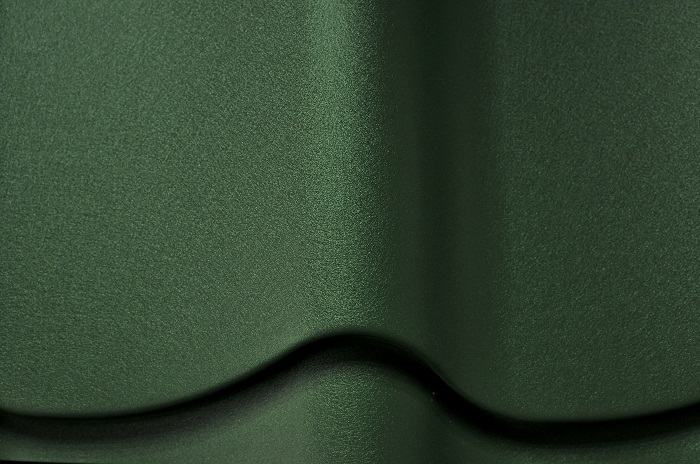
It is also a product of Rautaruukki. The main characteristics are similar to the Pural ® metal tile.
Only the appearance differs - such a roof does not shine in the sun at all. Outwardly, its surface is similar to ceramic tiles, and to the touch it resembles Teflon.
Plastisol
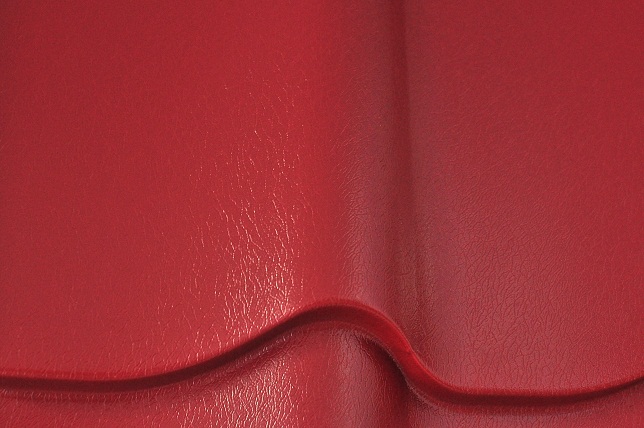
Plastisol is the thickest coating with a thickness of 200 microns. Best of all others resists scratches. Consists of polyvinyl chloride (base) and plasticizers. Outwardly, it differs by a pattern on the surface - strokes, pinholes, "shagreen leather".
The resistance of plastisol metal to corrosion is high. In the conditions of a modern city with its gassed aggressive atmosphere - a very valuable quality.
But in terms of resistance to ultraviolet radiation and elevated temperature, plastisol is inferior to other coatings. Heating above 60 ° C is undesirable for him. Such a roof can not be installed in the southern regions. Metal tile plastisol, price:
HPS 200 is a coating similar to plastisol metal. It is produced by the Anglo-Dutch metallurgical concern Corus. The corrosion resistance of the HPS 200 is higher due to the presence of zinc alloy (95%) and aluminum (5%) on the surface of the steel.
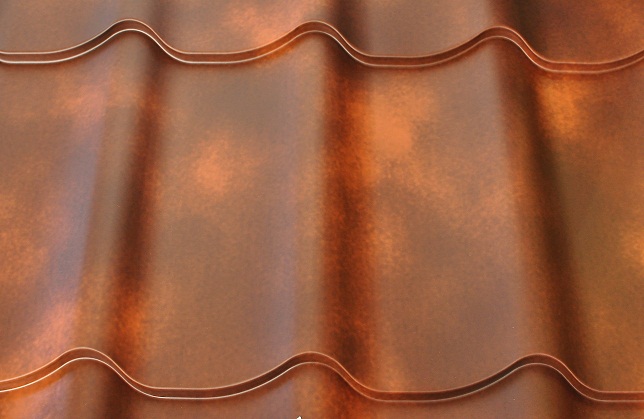
This is a new development of Arcelor Mittal. Thanks to special technology, Cloudy metal tiles have a matte smoky surface - as if it were natural fired clay tiles.
Any other coating is plain. Moreover, the appearance of the Cloudy metal tile is such that from a distance of about 2 meters it is difficult to distinguish it from natural clay! By the way, in translation from English Cloudy means "cloudy".
The thickness of such a cloud coating is 35 microns. According to the characteristics, it approximately corresponds to the pural.
Metal tile Printech
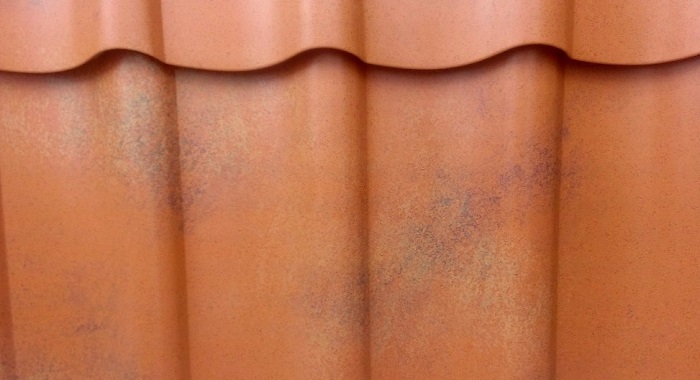
The Printech Terracotta Burn metal tile is manufactured from DONGBU STEEL metal, a South Korean steel producer, one of the largest in the world.
When choosing metal tiles you are faced with its great diversity, so the logical question is what exactly to choose. This text is devoted to various types of polymer coatings and metal tile manufacturers.
Today, the most popular in Moscow and the region are such polymer coatings as: Pural Armarcor, Granite, Prism (based on PU polyurethane). You can also find PUR coverage of the Swedish concern SSAB. However, its comparison with these species is not very true, because PUR is a two-layer polyester with a minimum installation temperature of –10 ° C versus –15 ° C for polyurethane coatings. The latter are more resistant to ultraviolet. The stable thickness for PU is 50 microns, for PUR - from 42 to 48 microns.
The first on our list we will consider Pural. This polyurethane coating is optimal for different types of roofing materials. Pural is well processed and mounted from profiled sheets. This material has a slightly structured surface with high resistance to mechanical effects of snow and ice, as well as to ultraviolet sunlight. It is also easily painted during repairs and is resistant to chemicals.
The pural was developed by the Finnish concern Rautaruukki in 1999, and in Russia, the first metal tile with pural was introduced by Rannila. This tile was very popular among private developers during the construction of cottages. This is easily explained by its quality and durability. At the same time, price plays a role in the second place.
The company Rannila STEEL OY (Rannila) is part of the metallurgical concern Ruukki (until 2004 - Rautaruukki) and since 2005 it has been called by the same name. Today, products of the firms Corus (England) and Arcelor (Germany, Belgium, Great Britain) are gaining more and more popularity. Corus polyurethane metal tiles are called Prism and Armarcor, and Arcelor is Granite. The characteristics of these coatings are completely similar to the properties of the Finnish pural. All these coatings are warranted for 15 years.
Now let's pay attention to plastisol - polymer based coating polyvinyl chloride (PVC plastisols). Typically, such materials are in the form of a liquid or pasty mass and are stable. But if it is heated, then plastisol quickly turns into a monolithic plastic compound, as they say, “gelatinizes”. This coating has excellent physical and mechanical properties, high electrical resistance and chemical resistance.
Metal for metal is produced by different manufacturers. For example, Corus has a dot embossed plastisol; it is labeled as HPS200 (RAL color). Finnish plastisol of Ruukki concern is embossed with strokes, marked as PVC200 (RR color). The German company EKO Stahl has released plastisol embossed under the skin, labeled as PVC200 (color according to the P standard).
The main advantage of plastisol is its thickness (200 microns). This is a serious protection against mechanical stress. For this reason, plastisol is popular among builders - the risk of scratching or damaging this coating during installation is minimal in comparison with other metal tiles. For at least 5 years, a roof with such a coating will not bother the developer. This is important, given that most construction companies give a 2-3 year guarantee, after which their responsibility both formally and really ends.
Surely you saw how the asphalt or black rubber heats up in the sun in the summer. The metal tile, and, accordingly, the coating itself on hot days can also heat up, sometimes the temperature reaches + 100 ° C. This is especially true for tiles of dark colors. The average operating temperature of plastisol is + 60-80 ° C. Already at this temperature, the coating begins to soften. As a result, the strength of the connection with the metal is lost, which can lead to moisture entering the coating, as a result of which a water bubble forms under the film. The consequences of this are the permanent detachment of PVC from the metal. It is important to keep in mind that a metal tile with such a coating is processed at + 10 ° C. Also, this type of coating is not sufficiently resistant to ultraviolet rays, which is why uneven burning of the roof is possible. At cost, plastisol is in the same price segment as the above coatings. Warranty on plastisol is not provided by all manufacturers, for example, Ruukki does not give it at all.
The next material is matt polyester - polyester coating with a thickness of 35 microns. This is a type of regular polyester that is modified using Teflon. The main advantage of a metal tile with this coating is its matte surface. It is known that manufacturers of artificial roofing strive to maximally accurately simulate natural ceramic tiles. It is a metal tile with a matte polyester that is best suited for this purpose. This coating has a thickness of 35 μm, which is sufficient for resistance to weak mechanical stress. In addition, matte polyester can be produced in the unique color CLOUDY (manufactured by ArcelorMittal). In Lobnya there is a factory where metal is made from this metal. The matte surface of the metal tile does not glare and looks like aged natural tiles. This option of roofing is very popular among our customers today.
Last we will cover polyester - a high molecular weight compound that results from the interaction of polybasic acids or their aldehydes with polyhydric alcohols.
Today, polyester-coated metal tiles are one of the best-selling roofing materials. This is easily explained by its lowest price - only 220 rubles / m. That is why it is so common in budget buildings - in administrative buildings, cottages, small country houses. The polyester coating is only 25 microns thick. This does not provide sufficient resistance to mechanical stress, but with a limited budget is not the most significant factor. The main thing is that there is a roof.
Polyester coated metal tiles are made both abroad and in Russia. Chief among domestic metal suppliers is Novolipetsk Metallurgical Plant. In addition, metal is imported into our country from Europe and Asia. If the metal tile was made of imported metal, a 10-year warranty is provided on it. Russian-made metal tiles do not have such a guarantee.
The table shows all the data on the main coatings that are used in Russia.
Comparative characteristics of coatings
Technical
|
Polyester |
Matt
|
Plastisol |
Pural |
|
Surface |
embossing |
|||
|
Coating thickness, microns |
||||
|
Primer layer thickness, microns |
||||
|
Protective varnish thickness |
||||
|
Maximum temperature |
||||
|
Minimum temperature |
||||
|
Minimum bending radius |
||||
|
Color fastness |
||||
|
Mechanical resistance |
||||
|
Corrosion resistance |
||||
|
Weather resistance |
I am sure that the information in this article will help you choose the right roofing. Our experts will be happy to answer any of your questions.
|
Technical |
Polyester |
Matt |
Plastisol |
Pural |
|
Surface |
smooth |
matte |
embossing |
smooth |
|
Coating thickness, microns |
||||
|
Primer layer thickness, microns |
||||
|
Protective varnish thickness |
12-15 |
12-15 |
12-15 |
12-15 |
|
Maximum temperature |
60-80 |
|||
|
Minimum temperature |
||||
|
Minimum bending radius |
||||
|
Color fastness |
* * * * |
* * * |
* * * |
* * * * |
|
Mechanical resistance |
* * * |
* * * |
* * * * * |
* * * * |
|
Corrosion resistance |
* * * |
* * * * |
* * * * * |
* * * * * |
|
Weather resistance |
* * * |
* * * * |
* * * * |
Metal - a very reasonable choice for the roof of a suburban home. It is a lightweight, strong and durable material. It is easy to install, has a reasonable price. Thanks to a wide color palette and a wide range of drawings, the metal tile becomes a real home decoration. Today, metal is one of the most popular roofing materials. Since its introduction on the domestic market, its sales have been steadily increasing. Even the recent crisis has only slightly reduced the rate of growth.
Metal tiles are used on pitched roofs of private and public buildings with a slope of at least 11-12 °. But in order for such a roof to reliably protect your home from the cold and bad weather for a long time, it is important to choose the right material, invite skilled installers, and then competently operate the “fifth facade”.
Sheets of metal are made of rolled steel with a thickness of 0.40 - 0.55 mm. In the production process, it is coated with zinc or an alloy of zinc with aluminum, passivated, a soil layer is applied, then a polymer coating is applied to the front side and a protective varnish is applied to the back side. (The quality of the material should comply with GOST R 521 46-2003 “Cold-rolled and cold-rolled thin-sheet rolled products with a polymer coating from continuous lines.”) After that, the rolled products are passed through the profiling shafts of the machine, which form “waves” on them and “rows” (steps) ) are obtained by stamping. As a result, the surface of the polymer-coated metal really becomes like a clay tile roof topography.
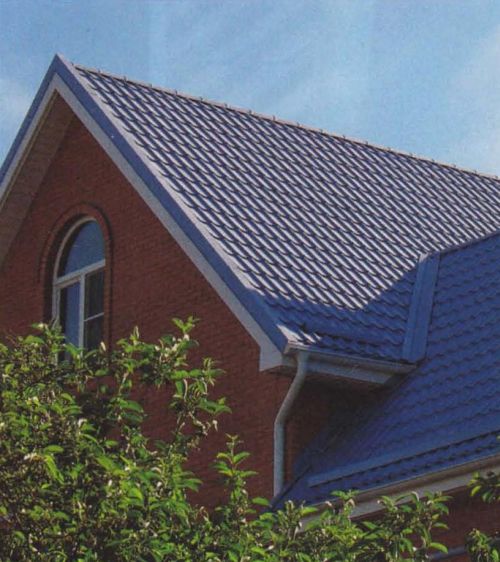
Now let's talk about what to look for when choosing a metal tile. One of the most important parameters is the thickness of the steel sheet. She is responsible for the bearing characteristics of the roofing: strength, rigidity, and therefore the ability to maintain shape. The thinnest (0.4 mm) profiled sheet looks the same as its thicker "brothers", but in places of bending the thickness of the steel can be less than the original due to deformation, which will necessarily appear during installation and maintenance of the roof. The probability of deformation or damage to metal tiles made of thin steel when moving along it is much higher than sheets with a larger thickness of the base, moreover, the latter will last longer. However, the price at high rates will also not be low.
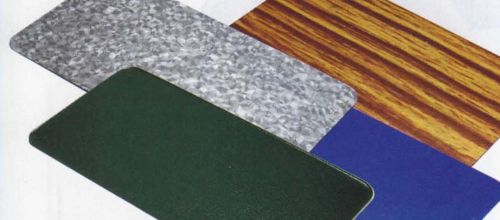
Experts believe that the optimal thickness of the steel base is 0.5 mm. To provide the desired strength, it must be the same throughout the sheet. However, steel companies are produced by different companies in different countries, and it varies markedly in quality - for example, galvanizing. The more zinc per 1 m² contains a protective layer of steel sheet, the more it is resistant to corrosion. According to European standards, there are four classes of galvanizing.
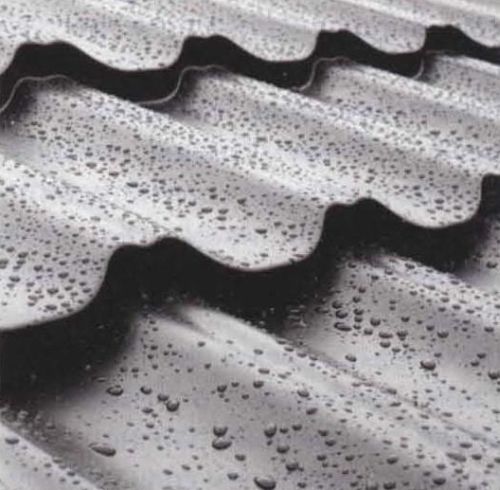
The first includes steel rolling, which contains 275 g / m² of zinc on each side, the second - 200 g / m², the third - 140 g / m², and the fourth - 100 g / m². In Europe, where the climate is milder than in Russia, materials with a galvanizing class lower than the first are not used for residential buildings. After all, zinc performs the function of cathodic protection: gradually collapsing under the influence of moisture, it saves the steel base.
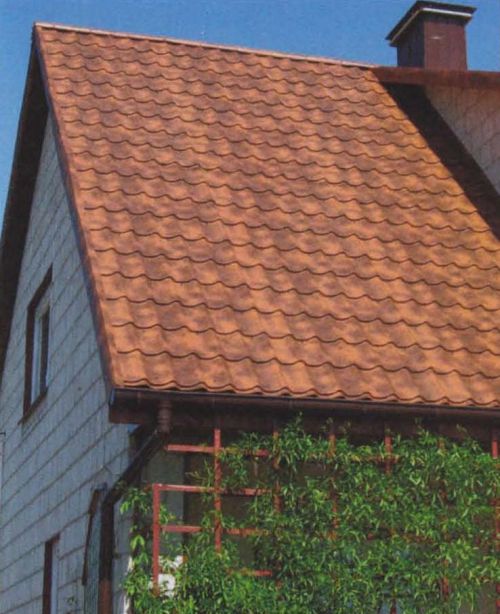
It is quite difficult for the average buyer to determine the quality of galvanized steel. Sometimes this circumstance is used by unscrupulous construction crews, using low-quality but cheap products and hoping that a few years after the construction is completed, there will simply be no one to make a claim.
Quality assurance roofing material can serve the well-known name of the manufacturer and the long experience of its work in the roofing market. Such products, as a rule, are more expensive, but it is unprofitable for serious companies to produce low-quality products. They are aimed at long-term work and development, and therefore value their reputation.
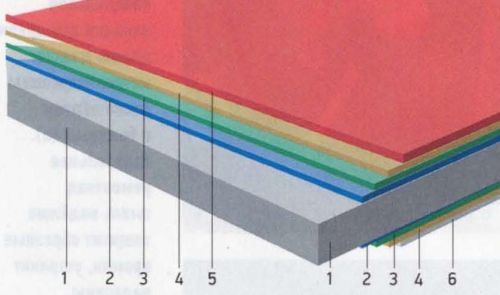
Expert commentary:
Due to the natural process of expansion and contraction of the metal during temperature changes, the fasteners of the metal tile become loose. With a sheet length of less than 4 m, the linear expansion coefficient can be neglected, but if it is more than 4 m, this loosening will be more noticeable, especially on extreme self-tapping screws. Therefore, we do not recommend using custom-made metal tiles longer than 4 m. If the length of the roof slope is 6 or 8 m, it is better to cover it with not one but several sheets.
The end sheet is mounted so that it protrudes 40 mm from the cornice, and leave space for ventilation on the ridge. Sales office managers will calculate the amount of material, select the optimal sheet length and propose a layout scheme. Of course, the reliability of the roof fastening depends on many factors: the quality of the screws, the correct adjustment of the torque of the screwdriver, the quality of the crate (the tree must be dry, without signs of decay). But no matter what the length of the metal tile sheets, a year after installation, we advise you to check the screws and, if necessary, tighten them.
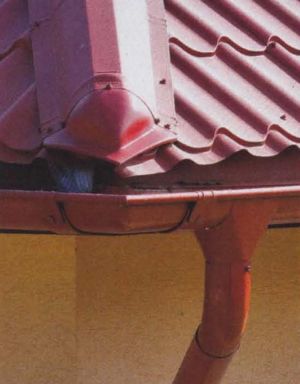
In this section, we draw your attention to the polymer coating of metal. The idea to apply them on steel galvanized sheets was not born by chance. They perform not only a decorative, but also a protective function. The fact is that polymers are resistant to ultraviolet radiation and mechanical damage, and also have good corrosion resistance. All these properties will help withstand climatic and mechanical stresses on the roof. In our market you can find metal tiles coated with ordinary and modernized polyester, polyurethane, polyvinyl chloride (plastisol).
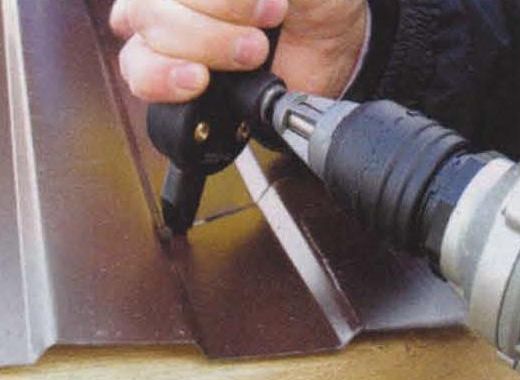
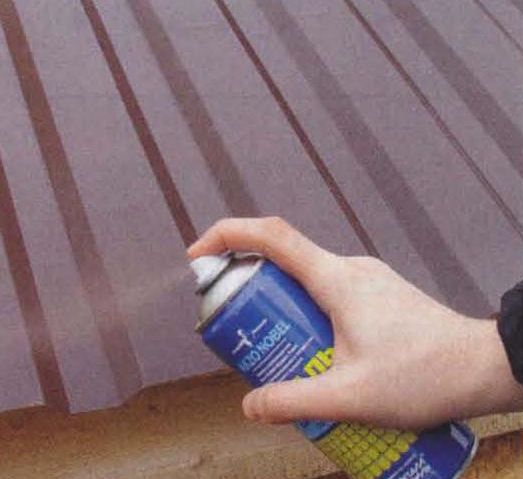
Polyester - The most common and most budget of them. It has good resistance to corrosion and UV rays, is ductile, but has medium resistance to mechanical damage. The layer thickness is usually 25-30 microns. The surface of the sheet looks flat and even a little glossy. Some time ago, opponents of the “gloss” could opt for matte polyester with a slightly rougher and more durable outer layer than conventional polyester. But today it is almost never used. He was replaced by a modernized polyester (35 microns), which has the best characteristics in this group. Its pronounced matte texture looks very attractive.
Polyurethane coating has a thickness of 50 microns, has the most attractive characteristics for consumers. It is created from polyurethane modified with polyamide and acrylic, resulting in a silky-matte surface. Polyamide granules give texture to the coating, and acrylic provides high strength. The coating easily tolerates weather disasters, it is indifferent to sudden changes in humidity and temperature, is not afraid of ultraviolet radiation and chemical aggression, scratches. Sheets with a polyurethane coating are easily processed, cut and do not give microcracks on bends at low temperatures. However, they absolutely do not lose their external characteristics - the brightness of the color or the integrity of the coating. The polyurethane coating easily tolerates the effects of ultraviolet radiation, significant differences in daily temperature, as well as stay in aggressive environments of coastal areas with a high salt content in the air. A metal tile with a polyurethane coating has the longest warranty period (15 years) and a service life (40-50 years), but therefore it costs 20-50% more.
Prism, Colorcoat Prisma - thick-layer material (layer thickness of the order of 50 microns) using polyurethane, an excellent combination of modern design and reliability. The optimally selected composition of the Galvalloy layer (95% zinc and 5% aluminum), together with a highly effective polymer coating, provides reliable corrosion protection for steel.
Polyvinyl Chloride (PVC) Coating - it is also called plastisol - it is applied in a thicker layer (100 - 200 microns). It reliably protects the steel base from scratches and other mechanical stresses, even with unskilled installation. At the same time, it is less resistant to the sun's rays, under which it heats up, becomes soft and deformed. Some manufacturers use modified plastisol, the properties of which are significantly improved with various stabilizing additives. But if in the middle lane a metal tile coated with polyvinyl chloride will serve faithfully, then for areas with high solar activity this is not the best choice. Other manufacturers use PVC coating only in the manufacture of trim elements and drainage systems, where protection against mechanical damage is most relevant and the effect of the sun is not as strong as on the roof plane. After all, drainage systems are often in the shadow of the facade of the building, and the area on which the sun's rays fall is small.
Polyvinyl Fluoride (PVDF) - a coating thickness of 27 microns, consisting of polyvinyl fluoride and acrylic. Has a glossy surface, may be metallic. PVDF is self-washing, but does not have high resistance to mechanical damage. This material is especially resistant to ultraviolet radiation, it practically does not fade.
Decorative-polymer coating (DPP) of metal - These are coatings with all kinds of patterns: subtree, brick, natural stone, natural materials, tiles and many others, which allows you to give finished products a unique look. The drawing is applied to the galvanized / aluminum-galvanized steel sheet by offset method. It has excellent wear resistance, longer retention of color and gloss of the coating, increased resistance to weather conditions and mechanical damage (scratches).
Plastisol has a thickness of 200 microns. The basis of this coating is a modified polyvinyl chloride, which has an attractive appearance and provides reliable and durable protection of the roofing in all weather conditions. It is more resistant to mechanical damage, to the "aggression" of nature, but is destroyed under the influence of high temperature.
The assortment of large manufacturers of metal tiles has materials with different polymer coatings. However, be careful: unscrupulous companies can resort to various tricks to reduce the cost of the final product. For example, manufacturers reduce the amount of zinc in the protective coating or reduce the thickness of the polymer layer, which naturally leads to poor quality. Unfortunately, the buyer is not able to detect this.
Often, sellers give one coating over another or exaggerate the thickness of the layer. The “indicator” is the warranty on the polymer coating or on the material given by the manufacturer, not the seller. Moreover, the guarantee should not be verbal, but written - in the form of a special coupon, which lists all the defects to which it applies, its conditions, as well as the rules for transportation, unloading, storage and installation, not subject to violation.
Note that the written guarantee is not distributed everywhere - it is given only by large manufacturers of metal tiles. The leading positions in the Russian market are occupied by the metal tiles of Interprofil, Metal Profile, Odintsovo Light Structures Plant, Unikma, Grand Line (all from Russia), Pelti Ja Rauta, Poimukate, Ruukki, Weckman (all from Finland) , Mera System (Sweden).
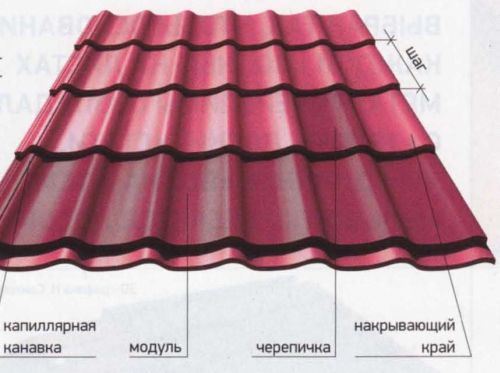
Expert commentary:
Metal and elements (transactions can never be cut with an angle grinder (grinder) with abrasive disks. At the point of cutting, the disk and metal are heated, which leads to the burning of zinc and polymer coating. In addition, sparks that fall on the protective layer of the polymer fly burn them all of these places will soon become hotbeds of corrosion A professional installation team should have a special tool: non-abrasive saws, electric notching shears or ordinary notching metal shears, etc. Places sections, chips and damage to the protective layer must be treated with a special repair enamel for polymers.
Sheets of metal tiles of one or more sizes (the most common - 2200 x 1180 mm) and colors offer many construction markets and shops. These are the so-called warehouse sheets. The same trading organizations and numerous specialized companies provide a service such as custom-made material (sheet sizes will be calculated for a specific roof project). Their length can be any in the range from 400 to 8000 mm, and the width, as a rule, is 1180 mm (working width - 1100 mm). The waiting period is about 3 days, although at the height of the construction season, when enterprises operate at the maximum capacity, this period increases.
What to prefer: warehouse sheets or custom-made? It depends on many circumstances. For example, on roofs of complex configurations, replete with kinks and protrusions, when working with warehouse sheets there will be a lot of waste, and custom-made will minimize their amount. If you are running out of time, you should use the warehouse program, since the production of custom sheets will take some time. Small gable roofs are easier to cover with whole sheets, the length of which corresponds to the length of the slope. If this parameter is more than 6 m, it may be difficult to transport and install the material, for example, with a climb to the roof. In a word, in each concrete situation it is necessary to search for the middle ground.
Ideally, professional roofers with experience working with metal tiles should help with the choice. A prerequisite for the manufacturer to provide guarantees is compliance with the rules of transportation, storage, loading and installation. In production, finished sheets are packaged before transportation in accordance with the regulations. They are laid one on top of the other, using special grease so that they do not stick together, do not rub and do not scratch each other. Then they are placed in a special pallet from a wooden bar, closed with the same on top, pulled together with belts and transported. The packaging with metal tiles must be attached to the body. It often happens that a car starts off a slide and loose cargo falls out of its body.
It is useful to control the process of manual unloading at the facility. The fact is that metal sheets should only be carried in an upright position. If you hold a sheet 6 meters long at two edges, like a blanket, it will bend and deform. At the facility, packs with metal tiles are laid out on level ground on the uneven bars. If it is assumed that they will be stored for more than 1 month, the sheets are unpacked and laid on top of each other, be sure to be laid with the same wooden slats to ensure ventilation.
A metal tile is only a part of the roofing system, which should retain heat in the rooms in winter and prevent heat from the red-hot roof inside the house in summer. This kind of “pie” protects the insulating material from the penetration of vapors generated during the life of a person, as well as passes already seeping into it through the thickness of the insulation and, importantly, displays on the street.
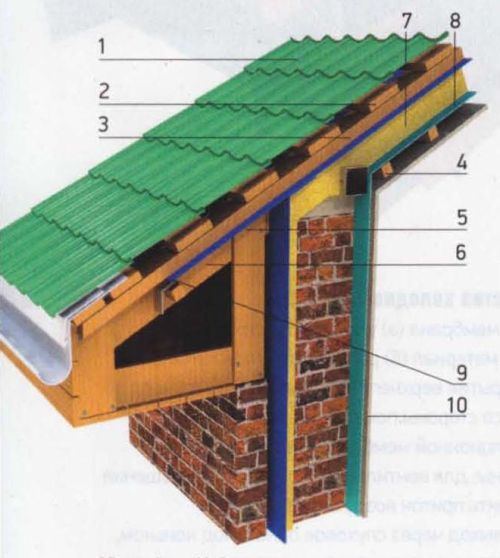
In this case, the daily temperature drop even in summer leads to the formation of condensate on the inner surface of the sheets. Moisture or water droplets can cause rotting of wooden roof structures, and moistened heat-insulating materials are known to lose their properties.
Therefore, it is not so important which room is under the roof - a residential or cold attic; in any case, during its installation, special attention should be paid to the device of under-roof ventilation and waterproofing. Waterproofing membranes laid under the metal tile (under the crate) will not allow moisture to penetrate further into the subroofing space. A vapor barrier, laid under a layer of thermal insulation, will protect it and the roof from the fumes coming from the living quarters. The Russian market offers many different manufacturers, including Jutafol (Juta, Czech Republic), Eurotop (international concern Fakro), etc.
![]()
This is a complex structure consisting of a large number of layers. Each of them performs a specific function. But only in the aggregate, as well as with the right choice of materials, calculation and installation, they will work reliably and for a long time. Therefore, when installing the roof, it is extremely important to strictly follow the instructions of the manufacturers.